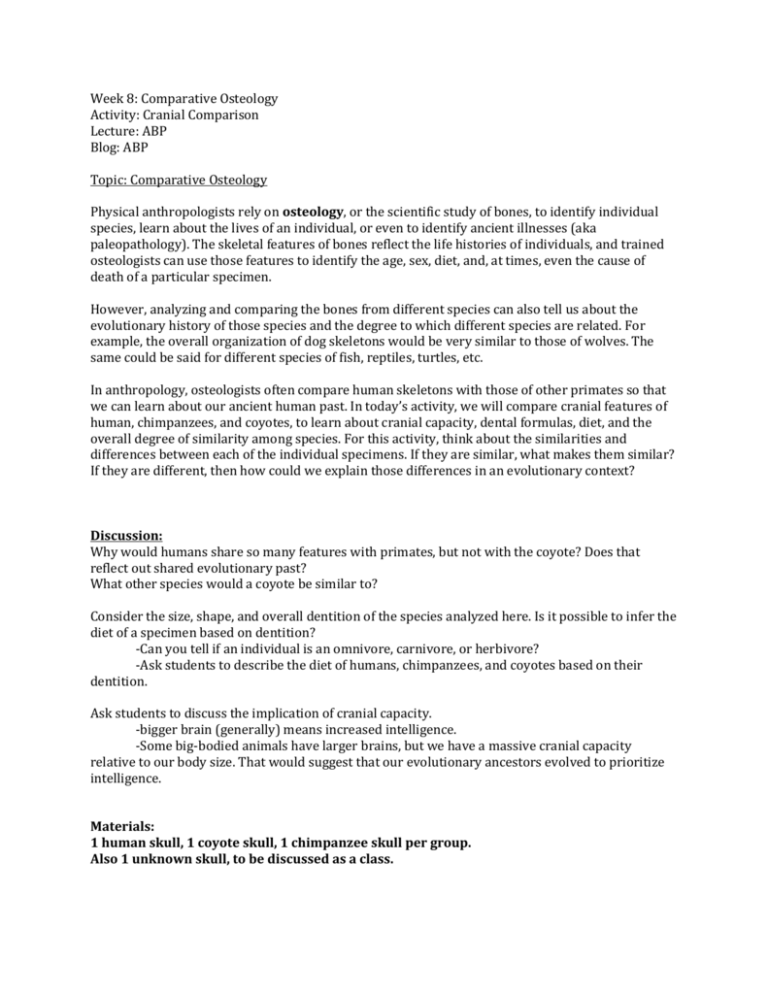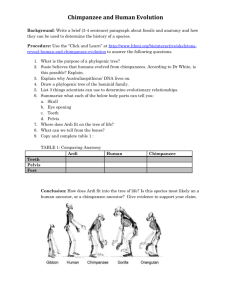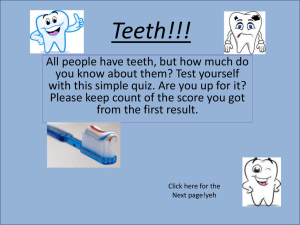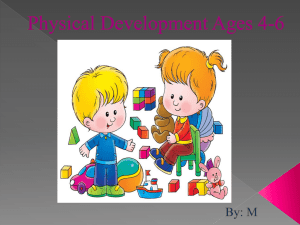Week 8 Skeletal Features
advertisement

Week 8: Comparative Osteology Activity: Cranial Comparison Lecture: ABP Blog: ABP Topic: Comparative Osteology Physical anthropologists rely on osteology, or the scientific study of bones, to identify individual species, learn about the lives of an individual, or even to identify ancient illnesses (aka paleopathology). The skeletal features of bones reflect the life histories of individuals, and trained osteologists can use those features to identify the age, sex, diet, and, at times, even the cause of death of a particular specimen. However, analyzing and comparing the bones from different species can also tell us about the evolutionary history of those species and the degree to which different species are related. For example, the overall organization of dog skeletons would be very similar to those of wolves. The same could be said for different species of fish, reptiles, turtles, etc. In anthropology, osteologists often compare human skeletons with those of other primates so that we can learn about our ancient human past. In today’s activity, we will compare cranial features of human, chimpanzees, and coyotes, to learn about cranial capacity, dental formulas, diet, and the overall degree of similarity among species. For this activity, think about the similarities and differences between each of the individual specimens. If they are similar, what makes them similar? If they are different, then how could we explain those differences in an evolutionary context? Discussion: Why would humans share so many features with primates, but not with the coyote? Does that reflect out shared evolutionary past? What other species would a coyote be similar to? Consider the size, shape, and overall dentition of the species analyzed here. Is it possible to infer the diet of a specimen based on dentition? -Can you tell if an individual is an omnivore, carnivore, or herbivore? -Ask students to describe the diet of humans, chimpanzees, and coyotes based on their dentition. Ask students to discuss the implication of cranial capacity. -bigger brain (generally) means increased intelligence. -Some big-bodied animals have larger brains, but we have a massive cranial capacity relative to our body size. That would suggest that our evolutionary ancestors evolved to prioritize intelligence. Materials: 1 human skull, 1 coyote skull, 1 chimpanzee skull per group. Also 1 unknown skull, to be discussed as a class. TMSE-UA Partnership Spring 2014 Dr. Brooke Persons Teaching Assistants: Sophia Fazal, Rachel Miller, Sally Skelton COMPARATIVE OSTEOLOGY: Humans, Primates, and Mammals Features of the Skull 1. Compare the drawings below with the three skulls that you have been provided. 2. Label one of the skulls below as human and the other as chimpanzee. 3. What features did you use to identify which skull was human and which was chimpanzee? _________________________________________________________________________________________________ _________________________________________________________________________________________________ _________________________________________________________________________________________________ Comparing Dentition A dental formula represents the number of different types of teeth for a particular species. The dental formula is written like a fraction, with four numbers on top and four on the bottom. Each number represents the number of each type of teeth, beginning with Incisors, Canines, Premolars, and Molars. Incisors: shovel-shaped teeth located in the front of the mouth. Canine teeth: sharp, pointed, and conical, teeth located behind the incisors. Premolars: Teeth located between the canines and molars used to hold prey, assist in cutting and/or grinding Molars: The rear grinding/shearing teeth located posterior to the premolar TMSE-UA Partnership Spring 2014 Dr. Brooke Persons Teaching Assistants: Sophia Fazal, Rachel Miller, Sally Skelton Look at the crania in your collection and count the total number of teeth for each species. 4. How many teeth does the human skull have? ___________________ 5. How many teeth does the chimpanzee skull have? ___________________ 6. How many teeth does the coyote skull have? ___________________ 7. Which crania are more similar based on the total number of teeth? ___________________________________________________________________________________________________ 8. Count the different types of teeth for each skull: Upper Jaw: a. Incisors: Human ___________ Chimpanzee ___________ Coyote ___________ b. Canines: ___________ ___________ ___________ c. Premolars: ___________ ___________ ___________ d. Molars: ___________ ___________ ___________ Lower Jaw: a. Incisors: Human ___________ Chimpanzee ___________ Coyote ___________ b. Canines: ___________ ___________ ___________ c. Premolars: ___________ ___________ ___________ d. Molars: ___________ ___________ ___________ 9. Of the human, chimpanzee, and coyote skulls, which are more similar? _________________________________________________________________________________________________ _________________________________________________________________________________________________ _________________________________________________________________________________________________ TMSE-UA Partnership Spring 2014 Dr. Brooke Persons Teaching Assistants: Sophia Fazal, Rachel Miller, Sally Skelton Cranial Capacity The brain is located inside the cranium. The internal volume of the cranium is called cranial capacity. (Humans) (Chimpanzees) (Evolutionary Ancestor) 10. Of the human, chimpanzee, and coyote skull, which has the largest cranial capacity? _________________________________________________________________________________________________ 11. What do you think cranial capacity reflects? _________________________________________________________________________________________________ _________________________________________________________________________________________________ _________________________________________________________________________________________________






